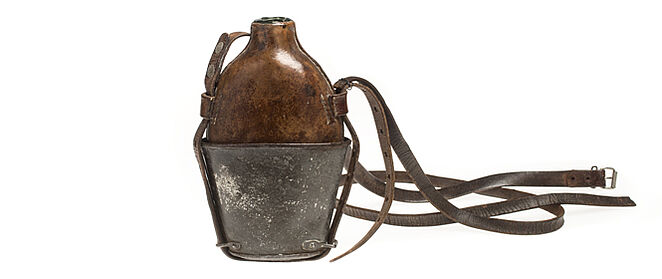Canteen for a Askari uniform
German East Africa (present-day Tanzania, Burundi and Rwanda), 1887/1895

The exhibition
Although the German Empire was one of the major European colonial powers from 1884 until the end of the First World War, it is only in the past few years that the colonial past has increasingly begun to enter public consciousness in Germany. In the exhibition ‘German Colonialism. Fragments Past and Present’, featuring more than 500 exhibits, the Deutsches Historisches Museum addresses various aspects of German colonialism for the first time. The exhibition offers fascinating insight into the interests, development and dynamics of German colonial history and tells of the scope of action within which a broad spectrum of German, African and Oceanian players pursued their aims and motives. The possibilities for taking action open to the colonised peoples ranged from different forms of resistance to cooperation and participation in rule.
Canteen for a Askari uniform
From 1884 onwards, German colonialists recruited African men as soldiers on the coast of East Africa, in Sudan and in Egypt. Initially they did not have a regular uniform. It was introduced with the development of the ‘protection force’ (Schutztruppe) from 1889 to 1891 and was based on the uniform of the Anglo-Egyptian askaris in Sudan. The askaris were African colonial mercenary soldiers who belonged to the colonial order in terms of training and dress. But they retained their Islamic faith, and beyond their military service they were integrated into local social life. Their uniforms showed their rank in the colonial hierarchy and they were seen in their own society as a sign of social advancement and a symbol of power. The wearers of these uniforms were officials who were at once respected and feared as representatives of colonial power and authority.